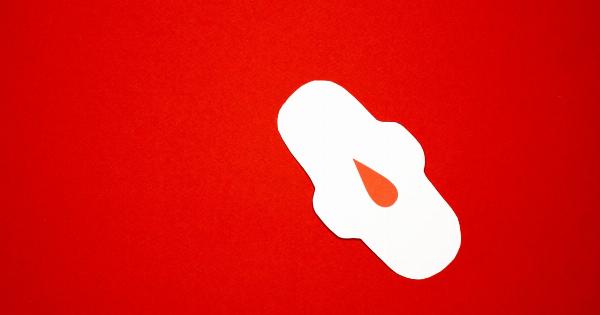For women of reproductive age, ovulation is an important natural process that occurs every month. It is the time when a mature egg is released from the ovaries and travels down the fallopian tube in preparation for fertilization.
Knowing when your body is ovulating is crucial if you are trying to get pregnant or avoid pregnancy. Here are 7 signs that indicate your body is ovulating, with photos to help you recognize them.
1. Change in Cervical Mucus
During ovulation, your cervical mucus changes in texture and appearance. It becomes more slippery, stretchy, and clear, resembling the texture of raw egg whites.
This change in cervical mucus is caused by an increase in estrogen levels and helps sperm to travel through the cervix and into the fallopian tube. Here’s a photo of what fertile cervical mucus looks like:.

2. Basal Body Temperature (BBT) Rise
Basal body temperature refers to your body’s temperature at rest, which is typically measured first thing in the morning before you get out of bed.
During ovulation, your BBT rises by about 0.5 to 1 degree Fahrenheit (0.3 to 0.6 degrees Celsius), which indicates that your body is preparing for ovulation. This rise in BBT is caused by an increase in progesterone levels after ovulation occurs. Here’s a photo of a BBT chart indicating ovulation:.

3. Mittelschmerz (Ovulation Pain)
Mittelschmerz is a German word that means “middle pain” and refers to the pain or discomfort some women experience during ovulation. This pain is typically felt on one side of the abdomen and can last for a few hours or a few days.
The cause of mittelschmerz is not fully understood, but it may be due to the stretching of the ovary or the release of follicular fluid. Here’s a photo of the location of mittelschmerz:.

4. Breast Tenderness
Some women experience breast tenderness or soreness during ovulation. This is caused by hormonal changes and increased blood flow to the breasts. The tenderness usually subsides within a few days after ovulation.
Here’s a photo of breast tenderness during ovulation:.

5. Increased Libido
Ovulation is also associated with an increase in libido or sex drive. This is due to the surge of estrogen and luteinizing hormone (LH) that occurs during ovulation.
These hormones increase blood flow to the pelvic area and stimulate the production of cervical mucus. Here’s a photo of a couple embracing during ovulation:.

6. Positive Ovulation Test Result
Ovulation tests detect the surge of LH in your urine, which occurs 24 to 36 hours before ovulation. A positive ovulation test result indicates that you will likely ovulate within the next 12 to 36 hours.
Here’s a photo of a positive ovulation test result:.

7. Ovarian Follicle on Ultrasound
A transvaginal ultrasound can detect the changes in the ovaries before, during, and after ovulation. During ovulation, an ovarian follicle (a fluid-filled sac in the ovary that contains the mature egg) is visible on ultrasound.
Here’s a photo of an ovarian follicle on ultrasound:.

Conclusion
Knowing when your body is ovulating is important if you are trying to conceive or avoid pregnancy. These 7 signs can help you recognize when ovulation is occurring in your body.
Keep in mind that not all women experience these signs and that they may vary from cycle to cycle. If you are having trouble tracking your ovulation or have concerns about your menstrual cycle, talk to your healthcare provider.





























